From DXOMark
DXOMark has released their findings for the Nikon D3s and Canon 1D Mark IV.
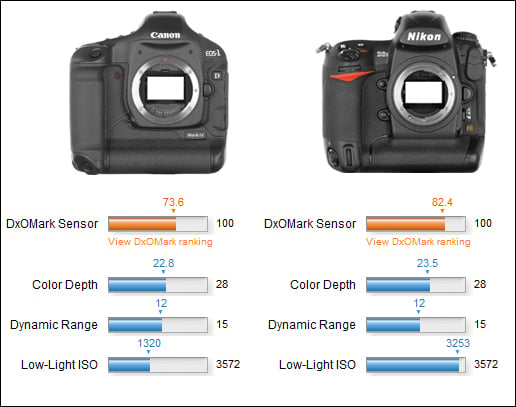
It’s about a wash between the 2 cameras outside of what we already knew. The high ISO performance is superior out of the camera on the D3s and it’s lower megapixel/larger sensor.
Again, take it for what its worth.
Read More: Direct Comparison
Read More: Canon 1D Mark IV
Read More: Nikon D3s
Canon EF 70-200 f/2.8L IS II
The lens will retail for $2499 USD. I’m still searching for places in North America to preorder this thing. I have yet to see pricing in Canada.
thanks Skip & Adam
cr
|
When you purchase through links on our site, we may earn an affiliate commission. Here's how it works. |


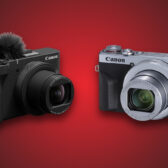
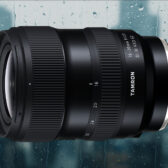
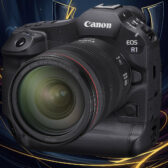
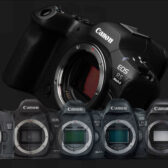
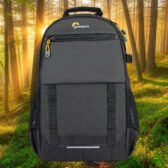
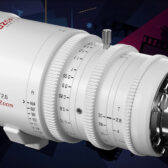

I’m actually tired of High ISO counting for 50% of a ranking. What a bunch of morons.
I’m actually happy with High ISO counting for 50% of a ranking. What a bunch of geniouses
DxO mark tells one how good the camera is just by its sensor performance…yeah right! So many aspects to look at than just RAW sensor performance.
So DXO are comparing a 1.3 crop (27.9mm x 18.6mm) camera with a FF camera ( 36×23.9mm) and saying the bigger sensor is better. Thats no surprise.
Hopefully a new FF canon will soon redress the ISO performance difference.
I was being sarcastic…
Where is the 60D I want so bad?
It is apparently what matters most, in the end there will be image no matter what.
PS. They do not claim to measure something else, for other information read other reviews.
One must consider that the D3S starts at ISO 200 and the 1D IV starts at ISO 100 (natively) – so each camera has roughly the same number of useful stops in ISO performace, the D3S just pushed up one stop. Both have effectively 8 stops of usable ISO range (100 to 12,800 for the Canon and 200-25,600 for the Nikon), and actually, the Nikon can push a little bit better than that. But as noted, that’s not the whole story. The canon allows 30% more reach to long lenses, and since this camera is aimed squarely at sports photogs, that’s a big plus. Also, the 4MP advantage allows for more cropping, which is another advantage to the Canon. I’m fairly certain Canon considered these factors and felt that the additional reach afforded by the APS-H and the 35% increase in mp’s was of more use to a professional photographer than some stratospherically high ISO capability. They essentially got the 1d IV to match the performance of the 1DS Mark III and to a lesser extent, the original D3, which was no slouch in the low-light arena itself! ISO, like megapixels – at some point more isn’t actually better from a practical standpoint. I for one am very pleased with the performance of my 1D IV, and I’ve yet to have anything but awesome performance out of the new autofocus system.
I’m guessing it will be announced some time next week. (Based on release dates for previous X0D cameras.)
I’m guessing the 1D Mark V will be FF. Nikon are basically twisting Canon’s arm with the D3 and D3S.
I agree. I think the whole DxOMark site shouldn’t be taken so seriously. People seem to forget that most of these DSLR’s take great looking photos when you’re not zoomed in to 500%.
That’s what I’m saying. At least, I hope I still want it once I see the specs.
60D…wouldn’t it be announced at the start of PMA, ie. friday ??
1Ds Mk IV will be FF… without the “s” it’s 1.3 crop
I curse this day i gone my way whith canon! To many lowbudget cameras and a very small range for pros. Where is a good FF with more than 5 pix per second and a useable High-ISO. The 5D is a good one –> I miss Auto-ISO and a better AF.
Zzzzzz… In other news: 12MP cameras are so 2000 and 5 late…
The best sensor therefore should have no more than 2MP so the 100% pixel peepers who never print their pix can view their unartistic images in their cheap, uncalibrated, 6-bit, dithering, low-color gamut, narrow-viewing angle, twisted nematic-panelled LCD screens without scrolling.
Any facts supporting that claim? If not, I’ll claim that it’s the other way around. Canon is offering a higher-MP camera which allows more cropping and which can produce comparable images with shorter (therefore cheaper) focal-length lenses due to the 1.3 crop factor, in most lighting conditions. True or not, I don’t really care.
I didn’t see anything that compared how megapixels weigh compared to ISO performance. Clearly, if all other things are equal, more megapixels are valuable.
It seems improved ISO performance is a way to reduce the weight and cost of lenses in your bag, right? What is the cost and weight difference between an F2 and F2.8 lens? (Sure, you can create creamier bokeh with an F2, but it is all a balance and if a high-performance ISO body can make my lenses more useful, shouldn’t I consider that advantage?)
Skip’s argument is one that surely applies to professionals who have multiple bodies for different forms of photography. Well said. Some of us, though, must try to find the one body that can give us the broadest application since we are not making money with our hobby.
Nobody mentioned the rumored cost of the new 70-200mm f/2.8 IS II. Seems a little bit steep to me and I bet a lot of people looking to pick up a cheap version 1 on the used market will be sorely disappointed. It better really deliver at that price!
I’m impressed by the D3s’ high iso performance but I know there are many Nikon shooters wishing for a little more resolution still.
Nikon’s High ISO’s performance is great for us Canon shooters as it puts the stress on Canon for creating better products.
Also with Canon’s HD movie features, and resolution strengths that puts the stress on Nikon to come out with better products. In the end, us consumers only benefit from all of it :)
Well I’d still like to get an exact method in which they measure each set of numbers, I mean the exact test conditions and parameters for each measurement.
I’m not saying that I think they tested it wrongly or that the numbers are inaccurate, I’d just like to know the details out of curiosity and so that I can gauge how valuable the data is to me when viewing it.
I really disagree with the “extra reach” argument (especially the part about calling it “extra reach”), your lenses aren’t “reaching” any more, your just cropping part of the image circle, so in effect your actually discarding a part of something you’ve payed for, I mean sure I’m not a sports photog but I would have picked one of these up in a heart beat as an all purpose work horse if it was FF.
Making a sensor a 1.3 crop just for “reach” is no different then cropping a FF sensor after you’ve taken the shot, the only serious argument for it is FPS and flash sync speed (both of which are very important for it’s target user I’ll admit) “reach” is just a side effect imo, wanted or not.
O God
in the dxo site you can find that the nikon 40d (300€) permorms better then the 1d or the 5d
lots of bulls…..
i think dxo get lots money from nikon
+1..
Laforet, Ascough, etc, are all ok with it, then here comes DXO0?! Its alright but not that great.
You forget about pixel density. The 1.3x crop is denser, therefore it captures more data from the smaller area. A 1.3x crop of a mere 12MP FF sensor is just ~9.23MP, a far cry from the 16MP of the 1D4.
At least with the new 70-200 2.8 IS II, I’m not taking a price hit on my excellent version I. I won’t be selling it and moving to the version II.
If they ever make a 24-70 2.8 IS, I might sell my 24-70 and get the IS version….but then I really like IS.
Also I’m waiting for a 100-400 II, I have held off buying this lens and rent if I have to.
And a 135 2.0 IS would be cool also.
So if a 1.3x crop is good, then a 1.6x crop is better. Believe it or not, I’m not being sarcastic. If the 7D had been a 12-14MP, 10FPS professional camera, with one stop better noise characteristics, I’d probably own one now.
I share you sentiment. It isn’t pleasant feeling trapped.
“I really disagree with the “extra reach” argument “…
Well, hmmm….
If I put my 400mm lens on my 1D and aim at a footbal player on the near 40 yd line, he’s going to fill about half the frame. If I put that same lens on a FF camera, it’s more like 1/3rd the frame. Once I crop the photos I have about 8mp left on the 1D, while I have about 4mp left after cropping the FF. That’s the difference between a half-page and a full-truck.
Put another way, if you crop an APS-H area out of a 12MP full-frame sensor you get 7.1MP (vs 16MP of the 1D).
That’s what I mean by more reach. This is a professional camera built for professional photographers who sell their images to professional media outlets. To us, these things matter – to everyone else, there are many other cameras to consider, and the playing field changes.
No, the best sensor should have 150MP with noise so bad that anything over ISO25 is unusable.
Best 1D MkIV to D3S comment I’ve read, sums it up quickly. I imagine if I ever owned one, I’d be shooting a soccer match for example with a 300mm/2.8 which is lighter and cheaper than the 400mm/2.8 the Nikonians might carry with them. And I can even have more reach cropping to a 10 mpix camera if I wanted.
Besides, how hard is it to shoot sports with the already acceptable ISO12800 the MkIV offers?
I’m sick of all this high ISO fiasco… people seem to be shooting high ISO samples more than shooting actual photos with the already wide range of low ISO range their cameras offer.
Still no news on a 24-70mm f2.8 L IS (mark II)? I was eager to read to post when I saw the title: “Sensors & Lenses!”
I so completely agree! I could care less about the DXO with these cameras, especially considering I’m not buying either of them. Canon has been disappointing me a lot lately.
I was forced to use a Nikon D3 because Canon doesn’t have a native USB mode for tethering w/o the EOS Utility which you can’t download from their horrible site & only usable w/ Canon cameras. Temptation to switch is strong but, I like the ergonomics of Canon.
I wanted to get the New 70-200mm and saved for it but man at this price, I just don’t know any more. I want to see samples and I hope, hope, the street price is actually much cheaper.
Canon needs to get things together!
With the feature set of the T2i, I can’t wait to see the 60D. I was surprised with all the stuff the newest Rebel inherited from the 7D…metering, video control/options, sensor. 60D will most likely have all that and more.
I hope they announce soon, I don’t want to wait until March and the wedding photographer show I believe PMA starts Sunday Feb 21 through to the 23rd. I’m curious to see what options will be removed from the 7D to give the 60D. 100% viewfinder, the new autofocus and metering would be sweet… but I don’t think those upgrades will make it. Probably just the video, the 7D video/live mode controls and the 18 MP.
Some lenses would be nice.
No, the best sensor will be a compromise of both… and 12 mpix is not this compromise! I admit I did a 40×60 cm print once of a photo taken by my 12 mpix 450D -my travel camera- and it looked amazing, BUT I really cant crop much of the photo to have more reach or recompose if it was a quick shot and I didn’t have time to compose properly while shooting. I think if Canon made a 18 mpix FF camera this will be the best compromise ever, but currently, the 1D mkIV or 5D MkII are better compromises than Nikon’s 12 mpix cameras.
My lovers…the Nikon D3s is better!
I’ll somewhat agree with you about the 5DMkII being a good compromise, but not the 1DMkIV. I think that the 1DMkIV would have been greatly improved with a FF sensor.
This strikes me as a Canon fanboy making excuses for Canon.
Having shot both, the only thing I like better on the 1d IV is the AF. I consistently get more in focus with it (though I am used to and invested in a Canon pro system).
The Nikon is clearly the superior camera. Getting butt-hurt because the company you like (who doesn’t pay you) got beat is amateurish.
This is the biggest party of pained canon fanboys I have every seen.
I’m invested in a Canon system too, and I would love Canon to be on top again like they used to be, but they simply aren’t.
This ridiculous allegiance to a company that doesn’t pay makes no sense.
Who here has used both? I have. The D3s is clearly superior for a number of reasons. I am personally more successful with the canon af (and it is better at tracking to and from the camera), but the D3/d700/d3s all beat it in side-to-side tracking. The high-iso image quality is far superior, and it has a full-frame sensor.
The d3s is the winner. Get over it, and go shoot. I will (with my 1d II).
Huh?
I am invested in the Canon system and I am CP as well, but that doesn’t make me a fanboy. I have been highly critical of some of the gear, and I can bite the bullet and cutover to another system if I saw value that justified it. I’m not making excuses for Canon – if anything Im making excuses for some people who enjoy the mental masturbation of dissecting the data on these sensors, without understanding the practical ramifications…
The Nikon is most certainly NOT clearly the superior anything – a camera’s value as a tool cannot be classified as
‘superior’ merely on ISO performance. I think these cameras are very competative with each other, and I too have shot both.
Butt hurt? Not a chance. Company I like? Not always. Amateur? Do you want to compare publication volume and revenue from photography or just run your mouth…
The WELL OF SOULS is a deep caldera 100 meters across. It is ringed with enormous WILLOWS whose roots seem to pour down the sheer rock walls like candle wax.
AT THE BOTTOM, in a natural amphitheater, the Omaticaya refugees are clustered around a central rock outcropping which forms a kind of dais and altar.
Shafts of dawn light reach to the bottom of the grotto, lighting a single willow — the MOTHER TREE. Ancient and gnarled, it grows in the center of the rock.
Its ROOTS spread down to the grotto floor, where they merge with the roots of the willows ringing the Well — forming a braided mat resembling the surface of a brain.
Mo’at stands on the dais, leading them in a CHANT.
Avatar screenplay
“people seem to be shooting high ISO samples more than shooting actual photos”
+1
Both cameras take excellent photos, but in the end it’s all about “the man behind the wheel”. :)
I agree. The 1DIV should have been full frame. The 7D gets you the reach you need and more if you want to reach and crop.
Doesn’t the D3x have high Res?
Uggg, $2500 for the 70-200 upgrade. Might be waiting a long time to get this one.
Yep, that’s it.
Moreover, soon there is no room anymore to stuff even more pixels in. Only way to improve in quality is grow in size. Could be, the same density remains, thus giving 27MP FF. Not that unimaginable in 3 years.
is it me or is this a wrong comparison?
shouldnt the canon immages be downscaled to the same size as nikon and then run the test to get a acurate noise and iso preformance result ?
yeah these new lenses piss me off they do get a LOT more expencive with the new upgrades its ridiculous they get twice as expencive.
“The d3s is the winner.”
It is a winner of an artificial challenge with arbitrarily chosen rules and scoring system. I really don’t care which camera “wins” and I find comparisons like that meaningless.
I’d probably own two!!! :)
So why don’t you just go out and buy a point and shoot? Duh …
You will want it. It will be a 7D, with better 3:2 screen, minus 100% viewfinder, 6fps not 8, lesser weather sealing.
Bob, did you know that the 7D, for instance, is better than all previous APS-C cameras from Canon when it comes to noise? See http://bit.ly/d4r6ca
Did you also know that the 1D series have had less noise (higher S/N) for each new model? See http://bit.ly/brFwl2
Actually I think it would be 12MP/(1.3)^2 ~ 7.1MP – even worse.
They have a “print” option that normalizes the data for a given output size, but I think they still show the “screen”-size (100%) data as a default.
“. I’m fairly certain Canon considered these factors and felt that the additional reach afforded by the APS-H and the 35% increase in mp’s was of more use to a professional photographer than some stratospherically high ISO capability.”
Just one more thing to add which supports Canon’s move – smaller sensor is cheaper to produce, thus higher margins (i.e. it is much easier to increase density not sensor size).
April ship for the lens 70-200 LII
Humph.
The Nikon D3s has pixels 2.198264 times as big as those of the Canon EOS-1D Mark IV.
Thus, the comparisons aren’t all too surprising.
Who gives a flying f**k? I am ecstatic about the quality, sharpness and focusing I am getting out of my 1D4. I have never taken better photos than with this camera… Not to mention I have been using Photoshop for 19 years so if there is anything wrong with the photo, I can fix it in PS in seconds…
There is no perfect camera and there is no perfect photo until it was post-processed.
Digital Cameras are limited compared to film, still, film has been dethroned and is slowly dying for good and even if you have the choice of using it, you choose not to. Same goes for Canon and Nikon. The D3s might be a little better, but try using one… The camera looks ugly and so does its interface. Very un-user friendly, ugly 1970’s like fonts and weirdly positioned buttons… Nikon is still using those dual button pressing commands which are a pain in the a$$ since you need 2 hands to navigate around… Canon’s lines are clean and organic and although it is not perfect, the layout of the buttons and controls is better than anything else out there, coupled to a tank of a body that feels as good as it looks.
The only better camera for me will be the 1Ds4, which I will get as soon as it is available and Nikon, leaf, hasselblad and mamiya are gonna have to eat it.
So what does that prove…that more pixels equals less noise? Hardly! The truth of the matter is that there have been ongoing technology improvements in sensors, their support circuitry and the algorithms used to process the signals. This allows some combination of increased sensor resolution and lower noise. With the D3s, Nikon has clearly chosen to use all of the improvement to reduce noise. Canon, on the other hand, seem intent on using all or most of the improvement to increase resolution. Since I find 10-12MP adequate for my needs and routinely shoot in dimly lit venues, I prefer the Nikon approach. Unfortunately, I have a major investment in Canon lenses.
It is rather controversial to state that the 7D is low noise. More than one purchaser has returned his 7D because the noise became objectionable at ISO400. After comparing the ISO series at Imaging Resources for the 40D and 7D, I concluded that the 7D has much more resolution than the 40D but roughly the same level of noise. So I have kept my 40D and not purchased a 7D.
I am still waiting for the firmware update adding that controllable auto ISO found in the 550D to the 7D. If Canon doesn’t bring that to the 7D, and brings it soon, my brand loyality will take another hit. Given all the other hits it has taken recently (e.g., my 7D’s servo AF is hit and miss), my brand loyality might eventually end up being so low the next time I am looking for a new body, that I might even be tempted to jump ship. Fortunately for Canon, the sweeter of the Nikon lenses are even more expensive than their Canon equivalents, thus making it a costly move even without considering the loss due to selling my existing gear.
I have already supended any investments in any system-specific photography gear for the time being.
I somewhat share that feeling… with my current knowledge, if I had to make the decision to start a investing in a system, I would much more seriously consider Nikon than I did before. Okay, I might probably still fall for the 7D which is on par with or even beats the D300s at least on paper, and the the fact that Nikon lens prices are even more insane than what Canon is asking might bring me to the Canon camp.
Somehow I could imagine a few years later Canon is developing and releasing products that will be surpassing all the much revered Nikon now and once again become the market leader in DR, ISO, everything… I guess all the comments will become less forgiving?
$2-4-9-9 spells relief! I just bought the 70-200 f/4 IS and was worried I was in too big of a hurry. An $1100 (retail) price difference just for a exta stop with all of the high ISO cameras these days??? I’m sure the price will come down. I can’t justify it, but I’m sure a lot of pros (sports & news) will snap it up. Still $1100 more???
with the price 5x that is of 5D II?
Canon and Nikon are almost identical in almost all other aspects of their cameras, the only way to differentiate is exactly the title of this story.
Canon fanboys…take the HINT. Canon has lost it in image quality as i’ve been saying in every post and I want to return to canon as well as I am a loyal canon photographer. But too bad.
Canon is going all out on video, for photography don’t even bother. They are done. DONE.
They say its $2.5k. Not bad considering it does not become a 70-130mm lens at close focus distance. :)I hope not.
The higher the megapixels, the better the chance that a camera will be inferior at higher ISO’s. It’s obvious that those who give short shrift to the weighting of high ISO’s are amateurs who will have the false impression that what really counts is more megapixels. The ability to take very good photos with a higher ISO translates to the ability to use higher shutter speeds and/or to use smaller aperture openings for lower light settings. I have a prosumer-level Canon DSLR and am, unfortunately, wedded to Canon because of the large number of the Canon lenses that I own. However, if I were to be asked by someone who is either purchasing a first DSLR or has only a couple of Canon Lenses whether I which I would recommend — Canon or Nikon — I would recommend Canon without the slightest bit of hesitation. Canon has clearly lost its way.
Check the revenues from both companies. :) Canon is far from being done. :)
You mean Nikon?
Son of Daguerre, et al.,
Sorry about the typo. In my above posting, I meant to say that I would recommend Nikon — not Canon — without any hesitation. I do not come to this conclusion lightly, I have been using Canon SLRs for about 29 years.
Yes, I realised.
With all of these new bodies & lenses coming on the market from Canon. Isn’t it time to upgrade the 5D MarkII? Just a quick comparison:
Looking @ 7D & T2i 63-area metering system. (MarkII – 35-area)
As well as 7D’s !amazing! 100% viewfinder’s coverage. (MarkII – 98%)
Plus T2i has 1,040,000 LCD dots. (MarkII – 920.000)
And the amateur-level DSLR now has the same shutter speed! (MarkII 3.9fps Vs T2i 3.7fps).
7D has a better focusing system! 5D MarkII’s identical to Rebel!
As well as look @ one of the main things that all of us concerned about: ISO. 7D as well as T2i now both have reached ISO 6400 with no boost!
I use a Nikon D3S, but I’d just as happily own a good Canon. Doesn’t matter that much to me – it was a brand decision made way, way back – but I don’t doubt for a moment I could take good pics with Canon gear had I gone with that brand.
We’re splitting hairs, and my clients have never raised any of this with me either. Be grateful for the great tools at our disposal, step away from the computer, go and take some great photos (with whatever gear you own)
I’d own three! Erm, ok.. maybe two would do.
+10
ouch bill. hope your ego is intact from that tongue lashing :D
So you wish to convince people the world over that they should be shooting ISO6400 and above all the time whenever possible so that they can use higher shutter speeds or smaller aperture settings and to do that well, nikon is the way to go?? LOL.
I’ve been wondering if there’s some built in Nikon favoring bias at DXO. Anyone else have any thoughts on this?
Good original quote and even better reply to the infantile comments from Bill.
As I said above I’ve been wondering about some pro Nikon bias at DXO for a while because I haven’t been able to see the “Nikon superiority” in comparison shots. I don’t think even the high ISO difference is nearly as much as DXO’s numbers show.
omg you sound like a canon fanboy.
they are different in size and products offering. lets compare only the camera division then we can see it better.
canon fanboy.
No, I’m saying that a Canon camera has more ISO limitation that a Nikon camera has. The ISO’s I use are usually in the 100 – 400 range, depending on the light situation. However, sometimes, I have taken low-light photos wishing that my Canon DSLR had less noise when I have to use a higher ISO. This is even truer when the low light object is moving at a speed that would not at all be considered to be slow.
When I’m taking underwater aquarium shots, I try to use flash. This is impractical when trying to take a picture of a seal darting around underwater, so I try to play the DOF game by using a high ISO. This would be even truer if I were to try to take an underwater shot of a penguin which makes a seal look like as slow poke.
This is my first time here, and my first comment, so goes easy on me!
But I just have to say, I don’t understand how it is accepted wisdom that a less-than-full-frame camera is seen as an advantage because of the greater reach it provides for lenses. The opposite is true for me: I would much rather NOT have my wide lenses turned into things much less wide because of the crop factor.
And sadly (at least for me, because I too am invested in the Canon system), Nikon is clearly ahead of Canon in low-light performance (high ISO). This makes a great deal of difference to me, because I shoot in low light situations quite a bit, and I would appreciate having more aperture choices that high ISO allows.
And finally, let’s not even talk about AF, ok? Because anything less than a 1D from Canon has been ridiculously inferior to what Nikon offers from the D300 on up. I mean, really, it’s not even close (and this is coming from a person who owns two Canon 5Ds, and again, shoots in many low-light situations where Canon’s AF just does not do the job.)
Sorry, but APS-H sensor doesn’t allow longer reach, it just produces smaller pictures. What matters is pixel density here ; if you crop by 1,3 a photo taken from a 27 mp FF sensor, you’ll get the same resolution as with the 1D4 ; in fact, except for dof, it will be the same photo. Except that if you need wider angle, you’ll have it, where you won’t have it with the 1D4.
The only justification to smaller than FF sensors is that they are cheaper. You pay less, and you get smaller images (and more dof).
You get longer reach with higher pixel density ; not with smaller sensors.
Well trolled sir. Hats off to you.
+1110000
Muwahahaha. Welcome newbie. What you said only means you don’t use teles for reach-limited sports & similar shooting. And the 7D finally has better AF than its closest competition, so your statment that Canon AF is inferior from “D300 on up” is inaccurate.
Sure, and after that a 5d mark III comes along, then the DXnext, etcetera. People don’t get it. Things will continue to improve.
Amen to that.
I am a canon user sir. Hats off to you too. Nice hypothesis.
In Germany the cheapest price is € 1975,- for the moment.
That’s 2680 USD.
http://www.heise.de/preisvergleich/a495172.html
just read; http://www.luminous-landscape.com/essays/eyes-vs-numbers.shtml. DXO is just for the fanboys , think their nikon/canon better than medium format, especially for nikon fanboys
who said that canon has lost it, according DXO rankings ha ha ha. even many medium format has lost it in image quality to nikon even from nikon d5000, get real and don’t become an idiot, please read ,read; http://www.luminous-landscape.com/essays/eyes-vs-numbers.shtml. DXO is just for the fanboys , think their nikon/canon better than medium format, especially for nikon fanboys
Had a play with the 70-200 Mrk II last night at a Canon display. V.nice really want want. Rep told me it would retail at £2800, £600 more than the mark one. Still prices i’m sure will come down after a while.
Keep whining canon fanboys, you are simply proving my previous hypothesis to be true.
wait, if I resize my picture to 12mp, then I get back all the dinamic range, color depth, and dof lost, so I can match the D3S…right? If it works for noise, I see no reason why it wouldn’t work for everything else.
Seconded, sounds like somebody is insecure about their camera.
http://www.robgalbraith.com/bins/multi_page.asp?cid=7-10048-10484
fyi 51 point CAM3500 is shared by the D300/D3/D3X/D3S/D700.
with the AF 5x that is better from 5D II?
lol troll alert. 5d2 has a much different autofocusing system them the rebel, and the center point is more sensitive than the 1d series in low light.
I wonder if canon is shooting for REAL pixel binning in the future… It may explain their megapixel whoredom. That or their just silly.
Another “benefit” of APS-H is a wider AF, without any redesign (that’s a benefit for Canon, actually).
Wrong. The ones on the D300/s are called Multicam3500DX. It’s slower than the ones used on the D3. And yes, 7D AF is better in specs and actual % keepers than D300 AF. All 19 points are cross-type, while the ones on the D300 are just on the 3×5 vertical center column, the rest are only single-line sensitive. The center point on the 7D has both X-type & cross-type oriented sensors and is triple-precision with f/2.8 & faster lenses. The whole AF system is so much more configurable & flexible than that on the D300 or even the D3 system.
j00==0wnz0red
Not really that much different. It’s exactly the same as Rebel-class AF in One-Shot AF mode since the 6 unselectable, invisible AF assist points are only used in AI Servo. The 5D/5D2 AF is sensitive up to -0.5 EV, so it’s superior only to 1D & 1D2 AF which only goes down to 0EV. The 1D3 & 1D4 AF is spec’ed to -1EV.
Nicely trolled sir. Headgears off to you and yours.
Comaring an 1/3 crop camera to an FF one for noise is non-sense.
Took Canon long enough to come up with something to match the D300 though lol
D3s > 1D4 for general photography applications.
1D4 > D3s for sports / bird photography.
7D, on the other hand, = or > than D300s,
500D/550D => D90
5D2 ~ D700.
And DxOMark’s camera ranking system is based on pixel-peeping, so it’s not really fair and impartial.
Not really. Canon has just dropped the ball on their top-end; aside from that there’s really no difference between Canon and Nikon in image quality. If your pictures are too noisy, clean up the noise, sharpen, then resize down to 12 MP. Then tell me whether you can tell which one is Canon and which one is Nikon.
The 1D Mark 4, on the other hand, is unfortunately 1.3, 1.5 stops behind the D3s, even when normalized for resolution. The APS-H format should mean that it should be 2/3s of a stop behind a FF camera, but that’s not enoguh to compensate for the D3s’ low-light performance.
Let’s see if the 1Ds4 makes the necessary improvements so that post-normalization it should match if not exceed the D3s.
their high iso isn’t even normalized for resolution. DxOmark may make decent measurements for SNRs and tonal quality, but their ranking system sucks
EF 70-200mm f/2,8L IS II USM:
U.S.A.: $2499
Britain: £2800 = ca. $4330
Huh? Why such a discrepancy?
Funny, I find the exact same thing about Canon ergonomics and look and feel.
Bitter grapes. Just admit that Nikon is best x 2 models. 1DMIV & 5DM2 are just about the same as D700, almost 2 years old.
That’s EXACTLY why ISO counts so much. Megapixels are increasingly unimportant, whereas being able to capture natural looking light without graininess and with a large dynamic range is still very difficult. Focusing under these conditions is also important.
Megapixels may be useful when the lighting can be intensely controlled or when making gigantic posters, but that’s not the majority of cases outside of the fashion industry, and even landscape might prefer dynamic range and low-light for those mornings and evenings rather than 12 noon daylight shots.
The D3s has 3 settings below ISO 200. Nikon could have called it ISO 100, except that ISO 200 is absolutely perfect and boosts speed.
BUAHAHAHAHAHAHHAHAAHHAHA!!!
Canon eats dirt ONCE AGAIN!
D300s beats the 7D in everyway. Keep fantasizing though LOL!
Ya, here’s my theory… it’s an 50% more pixels on a 1/3 smaller sensor. How did anyone this it was even going to be comparable.
Good grief. Why don’t you learn how to put sentences together before posting a comment?
How can you claim up to ISO 102400?? Canon !!!
What is your standard ?
Definitely, it is different from Nikon.
This is very interesting.
Look, three years ago I needed to do a night shot of the Milky Way for National Geographic, so I went out and bought a Canon 5D and a 35mm f1.4. Easily the best performing camera in low light at that time. That camera made great images. The 35mm f1.4 is sharp if you got it in focus (sort of an oxymoron there , right?)
Two years later and I’m doing a story on light pollution requiring a lot of low light photography and another shot at the Milky Way. So I went out and bought a Nikon D3 and a 14-24mm f2.8. Easy choice. Easily the best low light camera available at the time.
Now, if I were doing that again the answer would be simple. The best low light camera available today is the Nikon D3S.
But high ISO performance matters for more than just low light shooting. It is also a measure of how much you can open up the shadows in post processing before noise becomes objectionable. Better high ISO performance equals cleaner shadows.
As far as megapixels go I really don’t want more megapixels. At least not in the pages of National Geographic and certainly not for the 27″x40″ prints we do in our gallery all the time. I do like the files that come out of my D3X, I must say, but it’s not the extra megapixels that draws me to that camera, it’s be beautiful look of the files that comes from the color depth and dynamic range. They’re pretty. But so are the files that come out of a Canon 1Ds MkIII. They’re just really pretty.
Sorry to jump in here as an outsider and I don’t mean to rain on anybody’s parade.
Jim
I understand there is more to a camera than sensors, but DXO Mark tests sensors only. They dont test lenses, speed, and host of other things, and they dont pretend to. The way they tests those sensors is by looking at RAW files. They are the only ones that run such tests, if someone finds another lab that yields to different results, I’d like to know about it.
then why should you bother canon fanBOY dumbbell?
” I’m actually tired of High ISO counting for 50% of a ranking. What a bunch of morons.”
like the canon FanBOYs you mean, werent you the ones jumping up and down a couple of years back yelling at nikon owners about their miserable high iso perfomance?
and being Dumb too, just like every other canon fanBOYS
those figures are not for dumbbells like you, they are for people who knows how to interpret those values.
no DOX didnt come up with a crop camera, the camera company did that.. dumbbell
people who crop dosent know a thing about composition ,dumbell
what a bunch of fanboys.bill carry on please